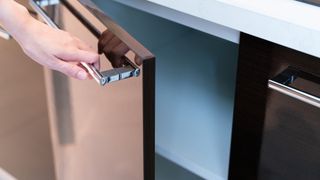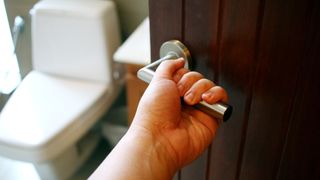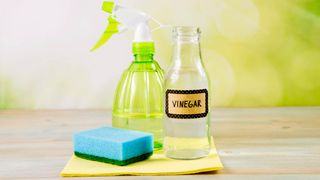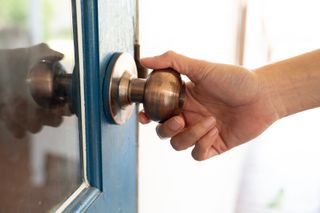When you think about the dirtiest spots in your home, your mind probably jumps to the toilet seat or kitchen sink. And while these areas do harbor germs, it’s the places that you touch the most that are the worst culprits.
Door knobs, door handles, and door pulls are unsuspecting pieces of hardware where germs infest. This hidden grime on door handles and knobs can breed bacteria, increasing the risk of spreading germs during the colder months. With some guidance and cleaning tips, you can avoid unnecessary winter germs and keep your health thermometer firmly tucked away in your medicine cabinet.
Here, Rossella Marzocchella, interior expert and head kitchen designer at Decor & Decor, shares her tips on keeping your home hygienic and your hardware in top condition.
A breeding ground for germs

You’d be surprised, but door handles, particularly in high-traffic areas like kitchens, bathrooms, and entryways, can be the breeding ground for more dirt and bacteria than you’d think.
These small fixtures are easy to overlook when you’re going through your normal cleaning routine, but they are the most used touchpoints in any home. With every grab, push, pull, and turn, they are collecting grime.
“Door handles are touched countless times a day by everyone in your home. They’re exposed to bacteria, oils, food particles, and other contaminants — yet most people forget to clean them,” says Marzocchella. “A regular wipe-down can make a huge difference in keeping your home hygienic.”
Handle with care

It’s not surprising how dirty handles can get when you think how often they are touched. Kitchen door handles, and cabinets are touched in between cooking tasks, collecting food particles, oils, and bacteria. Bathroom handles are particular hotspots, as they are touched before and after washing hands.
Marzocchella says, “Unlike other areas of the home that are visibly dirty, the grime on door handles can be invisible, making it even more important to clean them regularly.”
What’s more, apart from the hazard of collecting germs, handles attract layers of dust and grease that can dull their appearance over time. Keeping them clean will help maintain their condition and ensure you are protecting your household against unnecessary bugs.
How often should you clean handles?
Decor & Decor suggests that door handles and knobs should be cleaned at least once a week. But, if you have a busy household or small children, it’s worth cleaning high-traffic areas more frequently to reduce the risk of germs spreading throughout the home. And if someone is under-the-weather, consider cleaning the door handles and knobs daily to help prevent anyone else from catching a bug.
How to clean handles to get rid of grime

Daily clean
A daily wipe with a soft microfiber cloth is the easiest way to remove dirt, fingerprints, and oil accumulated throughout the day. Marzocchella advises, “Pay special attention to kitchen handles that are touched multiple times while cooking and bathroom handles, where bacteria thrive.”
Weekly deep clean

Your handles can be wiped with a stronger solution once a week for a deeper clean. Marzocchella recommends using a disinfectant or a natural solution like vinegar and water, adding that it’s especially important in high-traffic areas like kitchens, bathrooms, and front doors.
Vinegar-water solution: Mix equal parts vinegar and water, spray it onto the handle, and wipe it down. It’s ideal for handles with built-up grime.
Non-abrasive disinfectants: Harsh abrasives can damage surfaces, so Marzocchella recommends avoiding bleach-based products that can damage delicate materials and opting for non-abrasive cleaners designed for metals like brass, bronze, or chrome. They’ll clean the surface without damaging the finish.
Focus on high-touch areas

Prioritize high-traffic areas that are frequently touched, such as handles on kitchen cabinets, bathroom drawers, and entrance doors, to see a lot of use. This will help to reduce the spread of germs.
Don’t forget the details
Drawer runners, sliding door kits, and even the smaller knobs on kitchen cabinets can collect dust and debris. Use a small, soft-bristled brush or a microfibre cloth to clear out these tight spaces, ensuring that every part of your home hardware is as clean as the surfaces you use the most.
More from Tom's Guide
- Discover can DIY cleaning sprays really kill germs
- And 7 natural hacks to make your home smell good without chemicals
- Plus, 5 foods you can clean your home with naturally





















 English (US) ·
English (US) ·